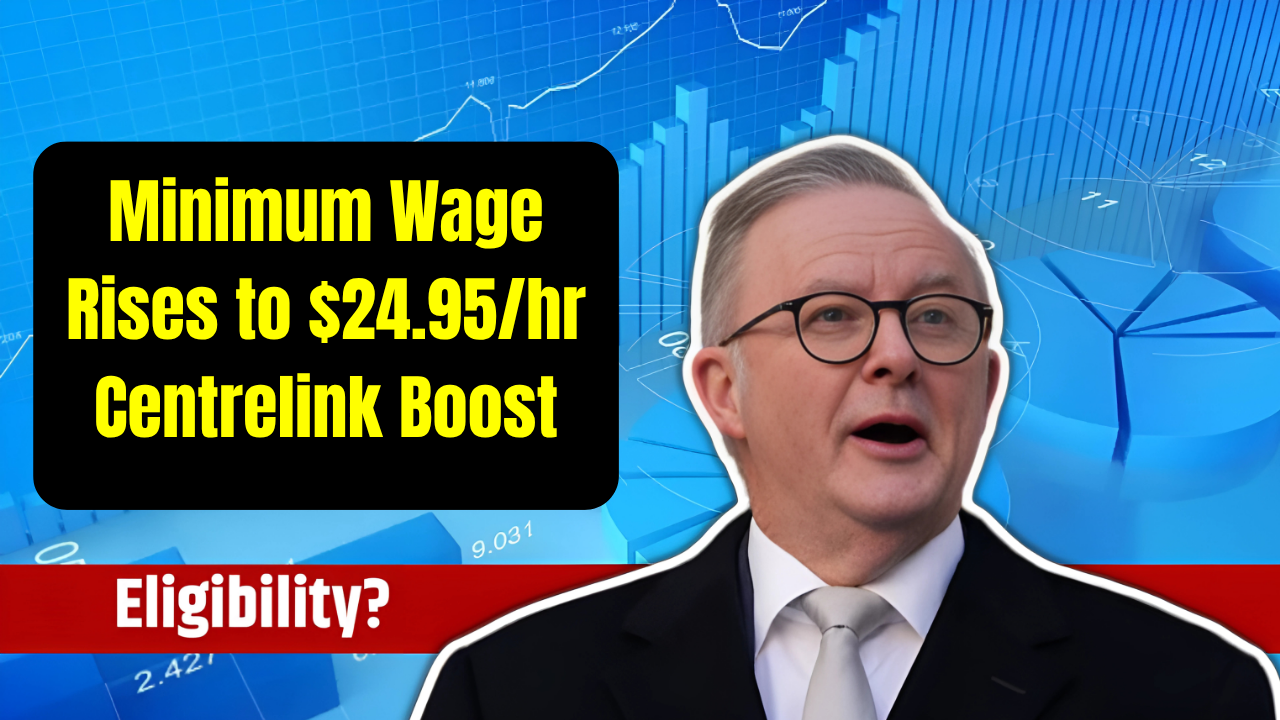From wage rises to new parental leave entitlements and tougher road rules, a number of significant changes are set to kick in across Australia on 1 July. This article covers the major updates affecting workers, families, and the wider community as the new financial year begins. New Centrelink Rates from 1 July 2025: Family Tax Benefit & Pension Hike.
Wage Increases for Australia’s Lowest-Paid Workers
Australia’s lowest-paid workers will receive a pay boost from 1 July, with the national minimum wage increasing by 3.5 per cent. The new rate will be $24.95 per hour, or $948 per week, based on a 38-hour week. The Fair Work Commission’s decision affects more than 2.6 million Australians and will apply from the first full pay period on or after 1 July.
This increase is designed to help workers keep up with the rising cost of living, providing some relief amid ongoing economic pressures.
Below is a summary of the key scheme changes and their new rates:
| Scheme/Area | Old Rate/Policy | New Rate/Policy (from 1 July) |
|---|---|---|
| National Minimum Wage | $23.23/hr (approx.) | $24.95/hr ($948/wk, 38 hrs) |
| Superannuation Guarantee | 11.5% | 12% |
| FTB Part A (child <13) | $222.04/fortnight (approx.) | $227.36/fortnight |
| FTB Part A (child 13+) | $289.12/fortnight (approx.) | $295.82/fortnight |
| FTB Part B (youngest child <5) | $189.56/fortnight (approx.) | $193.34/fortnight |
| FTB Part B (youngest child 5+) | $131.92/fortnight (approx.) | $134.96/fortnight |
| Paid Parental Leave | 20 weeks | 22 weeks (rising to 26 by 2026) |
| Super on Paid Parental Leave | Not applicable | Applies from 1 July |
Centrelink Payment Increases
Millions of Australians will also see a boost to their Centrelink payments, with a 2.4 per cent increase to help ease the rising cost of living. The changes are particularly significant for families receiving Family Tax Benefit (FTB) payments:
-
Family Tax Benefit Part A: The maximum rate for children aged under 13 increases to $227.36 a fortnight. For children aged 13 or over, the rate increases to $295.82 a fortnight.
-
Family Tax Benefit Part B: The maximum rate increases to $193.34. For families with a youngest child aged five or over, the rate increases to $134.96 a fortnight.
The FTB has been increased annually since its introduction in 2000, under both Labor and Coalition governments. Social Services Minister Tanya Plibersek emphasized that these payments are essential for helping families manage the cost of raising children and that indexation ensures support keeps up with inflation.
Superannuation Guarantee Increase
The superannuation guarantee, which is the minimum amount employers must contribute to their employees’ super, is set to rise from 11.5 per cent to 12 per cent. The new rate applies to all salary and wages paid on or after 1 July, even if the work was performed before that date.
This change is part of a broader effort to strengthen retirement savings for Australians and ensure workers have more financial security in their later years.
Super on Paid Parental Leave
For the first time, the federal government will start paying superannuation on its paid parental leave scheme for parents receiving government-funded parental leave pay on or after 1 July. This is a significant step toward gender equality, as it recognizes the impact of career breaks on women’s superannuation balances.
Paid Parental Leave Overhaul
From 1 July, Australian families will benefit from a more generous paid parental leave scheme, with the amount of government-funded leave increasing from 20 to 22 weeks. This is part of the federal government’s plan to progressively expand the scheme to 26 weeks by July 2026, the equivalent of six months of paid leave.
Once fully rolled out, families will receive around $24,000 in total support following the birth or adoption of a child. The policy is designed to give parents more time at home with their newborns and greater flexibility in how leave is taken. Parents can choose to take leave separately or at the same time, and spread it across two years, allowing for a staggered return to work or shared caregiving.
Immigration Changes for Skilled Workers
The government has made changes to Australia’s skilled visa system in an effort to reduce worker exploitation and attract talent. A new Core Skills Occupation List will replace the existing Skilled Occupation List, focusing on roles with genuine shortages.
Employers will have to meet stricter criteria, including offering market salary rates and proving they’ve advertised the job locally. The Department of Home Affairs also announced that income thresholds for skilled visas will increase by 4.6 per cent. This change will not apply to existing visa holders and nominations lodged before 1 July 2025.
Tougher Road Rules Nationwide
NSW will introduce harsher penalties for drivers using their mobile phones. From 1 July, those caught using their phone behind the wheel, even while stationary at traffic lights, can be fined up to $1,209 and lose five demerit points.
In Victoria, the road rule requiring drivers to slow down to 40 km/h for emergency responders will now include tow truck, roadside assistance, and incident response workers. Queenslanders will see a 3.4 per cent hike in vehicle registration fees as well as traffic fines.
Nationally, AI-powered surveillance cameras capable of detecting mobile phone use will be rolled out, as governments crack down on distracted driving.
FAQs
1. When do the new minimum wage and superannuation rates start?
The new rates apply from the first full pay period on or after 1 July 2025.
2. Who is eligible for the increased Family Tax Benefit payments?
Families with children under 18 who meet the income and residency requirements are eligible.
3. What are the new penalties for using a mobile phone while driving?
In NSW, fines up to $1,209 and five demerit points for using a mobile phone behind the wheel, even when stopped at traffic lights

